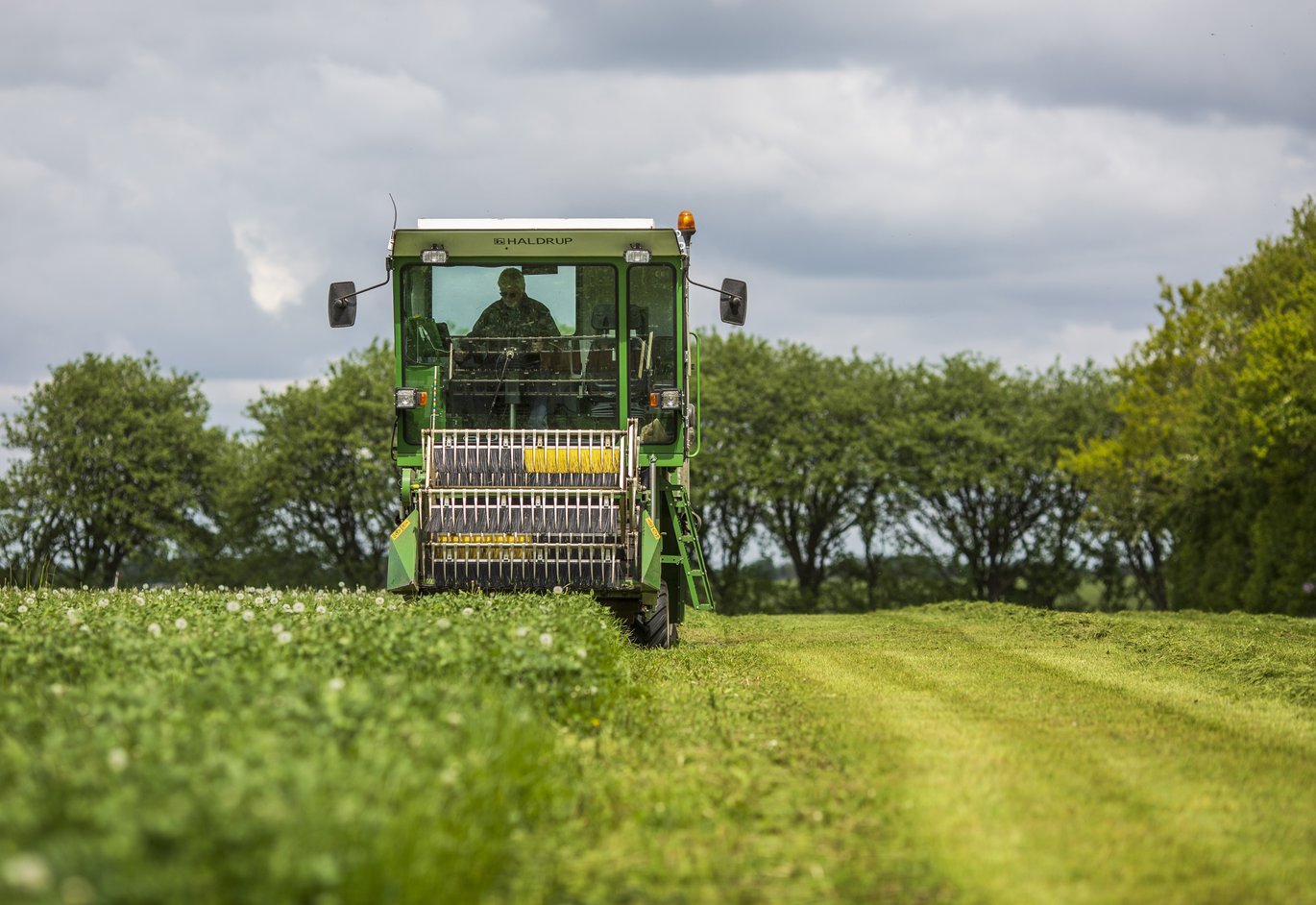Great opportunities for Denmark to secure self-sufficiency in protein
Grass protein can replace imported soy protein in compound feed for livestock. However, a complete transition from soy to grass will require an optimization of grass cultivation as well as of the extraction technology applied. In addition, the grassland areas should be increased, and this will benefit the environment and make Danish agriculture more sustainable.

Every year, Denmark imports between 1.5 and 1.7 million tons of soy, corresponding to 700,000 tons of pure soy protein. Cultivation of this soy takes up an area of approx. 760,000 hectares, primarily in South America. An increasing concern exists as to the environmental and socio-economic problems caused by soy bean production, and also that an increasing global demand for soy will result in further clearing of the rainforest.
At a request from the Danish Agricultural Agency, researchers from Aarhus University thus examined “how much of the current agricultural land in Denmark should be used for grass production in order to replace imported soy for feed by using protein extracted from Danish grassland areas?”
Higher yields expected
Today, Danish grass production yields approx. 10 tons of dry matter per hectare. Green grass and clover contain 15–25 percent protein in dry matter, and biorefining experiments show that about 40 percent of the protein is extracted. All in all, this means that it is possible to produce 0.72 tons “pure protein” per hectare, which in turn means that a total area of 979,000 hectares should be used for grass production in order to replace the current import of soy.
However, neither the current cultivation practice nor the grass varieties used are optimized in relation to biorefining, just as the biorefining technology is not yet fully developed. Targeted research and development efforts will increase the yields as well as the amount of protein extracted.
Different scenarios
The researchers set up four scenarios within the framework of which they estimate the effect of various improvements in the grass production system. One scenario optimizes both cultivation systems, grass varieties and technology, and expects to produce an average of 14 tons of grass dry matter per hectare with a protein content of 20 percent. Adding an improved biorefining technology allows for the production of 1400 kg extracted protein per hectare per year.
- We are aware that significant opportunities exist for optimizing both cultivation practice and biorefining technologies. However, it will require huge research and development efforts to facilitate this within the foreseeable future, says Senior Researcher and Head of Centre Uffe Jørgensen, Aarhus University Centre for Circular Bioeconomy (CBIO).
He further points to the challenge of maintaining the high yields in longer rotations as well as the risk of soil compaction in perennial fields.
We borrow grass from the cows – and return it
According to the optimized scenario, it will require an area of 500,000 hectares of grasslands in order to substitute imported soy protein with locally produced grass protein. Today, the Danish grasslands constitute approx. 300,000 hectares.
This grass is used as feed for ruminants, primarily dairy cows. However, the grass may still be used for feed after extracting the protein.
By means of biorefining, protein is extracted from the grass, but the pulp – which constitutes the major part – may still be used as cattle feed. Experiments even demonstrate increased milk yield when dairy cows are fed the pulp.
Advantages to environment and climate
If we succeed in further optimizing grass production and biorefining processes, we still need to find approx. 200,000 extra hectares for grass production in order to replace the soy import. An option would be to convert some of the maize fields to grass production. Maize production takes up approx. 180,000 hectares, and a conversion from maize to grass will entail significant environmental benefits. This is because nitrogen leaching from perennial grass is very limited, just as there is almost no need for pesticides in grass production – contrary to maize.
- An increased production of perennial grass instead of annual crops such as grains and maize will help reduce a number of environmental problems in agriculture, says Uffe Jørgensen. Increased self-sufficiency in protein will benefit not only the environment in South America, but also – to a great extent – in Denmark.
Behind the research
On 12 May 2020, the Danish Agricultural Agency asked DCA – Danish Centre for Food and Agriculture – to contribute a response to MOF question no. 8 as to the need for grassland areas in Denmark if imported soya protein is to be replaced by protein from locally grown grass. The response is prepared as part of the ”Framework Agreement on Research-based Policy Support between the Ministry of Environment and Food of Denmark and Aarhus University”, focus area 6 in “Performance Agreement Plant Production 2020-2023”. Further information Senior Researcher and Head of Centre Uffe Jørgensen, Aarhus University Centre for Circular Bioeconomy (CBIO). Mobile: +45 2133 7831. E-mail: uffe.jorgensen@agro.au.dk |
|---|
